背景
SHAP主效应值 ,即该特征在独立作用时对模型预测的贡献,这种方式剥离了交互效应的影响,更加直观地展现了主效应的变化趋势,为分析特征的独立作用提供了清晰的视角,有助于更深入地理解模型的特征行为,详情参考文章——期刊配图:SHAP主效应图绘制解释单个特征在独立作用时对模型预测的贡献
然而,仅仅展示主效应值的分布还不够直观。 拟合曲线 的引入,基于LOWESS(局部加权回归)的平滑曲线【当然其它拟合方法也可以,这里参考的是以下shap依赖图绘制的文章,也是往期文章——文献复现——优化SHAP依赖图拟合曲线与交点标注的新应用】,可以更好地捕捉主效应的全局趋势,揭示模型对特征的敏感性变化。同时, 交点标注 则进一步突出关键点——即SHAP值为0的位置,这些交点反映特征从正向影响到负向影响的临界点,为在特征影响变化与趋势提供参考
代码实现
模型构建
import pandas as pd
import numpy as np
import matplotlib.pyplot as plt
import warnings
warnings.filterwarnings("ignore")
plt.rcParams['font.family'] = 'Times New Roman'
plt.rcParams['axes.unicode_minus'] = False
df = pd.read_excel('2024-12-17-公众号Python机器学习AI.xlsx')
from sklearn.model_selection import train_test_split, KFold
X = df.drop(['Y'],axis=1)
y = df['Y']
# 划分训练集和测试集
X_temp, X_test, y_temp, y_test = train_test_split(X, y, test_size=0.2, random_state=42)
# 然后将训练集进一步划分为训练集和验证集
X_train, X_val, y_train, y_val = train_test_split(X_temp, y_temp, test_size=0.125, random_state=42) # 0.125 x 0.8 = 0.1
import optuna
from xgboost import XGBRegressor
from sklearn.metrics import mean_squared_error
def objective(trial):
params = {
'n_estimators': trial.suggest_categorical('n_estimators', [50, 100, 200, 300]),
'max_depth': trial.suggest_int('max_depth', 3, 15, step=1),
'learning_rate': trial.suggest_loguniform('learning_rate', 0.01, 0.3),
'subsample': trial.suggest_uniform('subsample', 0.5, 1.0),
'colsample_bytree': trial.suggest_uniform('colsample_bytree', 0.5, 1.0),
'gamma': trial.suggest_uniform('gamma', 0, 5)
}
model = XGBRegressor(**params, random_state=42)
model.fit(X_train, y_train)
y_pred = model.predict(X_val)
return mean_squared_error(y_val, y_pred)
study = optuna.create_study(direction="minimize")
study.optimize(objective, n_trials=100)
print("Best parameters:", study.best_params)
best_model = XGBRegressor(**study.best_params, random_state=42)
best_model.fit(X_train, y_train)
使用Optuna优化XGBoost模型的超参数,并使用最佳参数训练最终模型,为后续基于SHAP值的特征重要性和主效应分析提供模型基础
基础shap主效应图绘制
main\_effects\_df
计算测试集的主效应值,并将结果存储为main_effects_df,展示每个特征在测试集上的主效应值,代码与数据集获取:如需获取本文的源代码和数据集,请添加作者微信联系
num_rows, num_cols = 2, 4 # 设置2行4列
features = main_effects_df.columns[:num_rows * num_cols] # 取出需要绘制的特征
fig, axes = plt.subplots(nrows=num_rows, ncols=num_cols, figsize=(15, 8), dpi=1200)
for i, feature in enumerate(features):
row, col = divmod(i, num_cols)
ax = axes[row, col]
ax.scatter(X_test[feature], main_effects_df[feature], s=10)
ax.axhline(y=0, color='black', linestyle='-.', linewidth=1)
ax.set_xlabel(feature, fontsize=10)
ax.set_ylabel('SHAP main effect value', fontsize=10)
ax.spines['top'].set_visible(False)
ax.spines['right'].set_visible(False)
# 移除多余的子图
for i in range(len(features), num_rows * num_cols):
row, col = divmod(i, num_cols)
fig.delaxes(axes[row, col])
plt.tight_layout()
plt.savefig("1.png", bbox_inches='tight', dpi=1200)
plt.show()
绘制测试集所有特征的主效应值散点图
shap主效应图+拟合曲线绘制
import seaborn as sns
from scipy.optimize import fsolve
# 绘制散点图
plt.figure(figsize=(8, 6), dpi=300)
plt.scatter(X_test['X_1'], main_effects_df['X_1'], s=20, label='SHAP values', alpha=0.7)
# 添加LOWESS拟合曲线
sns.regplot(x=X_test['X_1'], y=main_effects_df['X_1'], scatter=False, lowess=True, color='lightcoral', label='LOWESS Curve')
# 添加shap=0的横线
plt.axhline(y=0, color='black', linestyle='-.', linewidth=1, label='SHAP = 0')
# 添加图例
plt.legend()
# 设置标签和标题
plt.xlabel('X_1', fontsize=12)
plt.ylabel('SHAP main effect value', fontsize=12)
# 去除上和右的边框线
ax = plt.gca()
ax.spines['top'].set_visible(False)
ax.spines['right'].set_visible(False)
# 保存并显示图像
plt.savefig("2.png", bbox_inches='tight', dpi=1200)
plt.show()
通过引入LOWESS拟合曲线,在SHAP主效应散点图中添加一条平滑的趋势线,使特征值与主效应值的关系更加直观。同时,通过绘制SHAP值为0的基准线,明确了正负效应的分界点,为分析特征影响的变化趋势提供了更清晰的可视化支持
shap主效应图+拟合曲线+交点标注绘制
# 绘制散点图
plt.figure(figsize=(8, 6), dpi=300)
plt.scatter(X_test['X_1'], main_effects_df['X_1'], s=20, label='SHAP values', alpha=0.7)
# 添加LOWESS拟合曲线
sns.regplot(x=X_test['X_1'], y=main_effects_df['X_1'], scatter=False, lowess=True, color='lightcoral', label='LOWESS Curve')
# 使用 LOWESS 数据生成拟合曲线
lowess_data = sns.regplot(x=X_test['X_1'], y=main_effects_df['X_1'], scatter=False, lowess=True, color='lightcoral')
line = lowess_data.get_lines()[0] # 拟合线条对象
x_fit = line.get_xdata() # LOWESS 拟合线的 x 轴数据
y_fit = line.get_ydata() # LOWESS 拟合线的 y 轴数据
# 找出所有与 y=0 相交的 x 值
def find_zero_crossings(x_fit, y_fit):
crossings = []
for i in range(1, len(y_fit)):
if (y_fit[i-1] < 0 and y_fit[i] > 0) or (y_fit[i-1] > 0 and y_fit[i] < 0):
# 使用插值法找到 x_fit 和 y_fit 中 y 值接近 0 的 x 值
crossing = fsolve(lambda x: np.interp(x, x_fit, y_fit), x_fit[i])[0]
crossings.append(crossing)
return crossings
x_intercepts = find_zero_crossings(x_fit, y_fit)
# 在图中标注所有的 x_intercepts
for x_intercept in x_intercepts:
plt.axvline(x=x_intercept, color='blue', linestyle='--', label=f'Intersection at X_1 = {x_intercept:.2f}')
plt.text(x_intercept, 0.2, f'X_1 = {x_intercept:.2f}', color='black', fontsize=10, verticalalignment='bottom')
# 添加shap=0的横线
plt.axhline(y=0, color='black', linestyle='-.', linewidth=1, label='SHAP = 0')
# 添加图例
plt.legend()
# 设置标签和标题
plt.xlabel('X_1', fontsize=12)
plt.ylabel('SHAP main effect value', fontsize=12)
# 去除上和右的边框线
ax = plt.gca()
ax.spines['top'].set_visible(False)
ax.spines['right'].set_visible(False)
# 保存并显示图像
plt.savefig("3.png", bbox_inches='tight', dpi=1200)
plt.show()
在绘制SHAP主效应散点图和LOWESS拟合曲线的基础上,进一步通过拟合曲线数据提取交点,明确特征值对模型输出影响的关键转折点,并在图中用虚线和文本标注交点位置。相比之前的代码,这里不仅展示了特征对模型输出的整体趋势,还揭示SHAP值从正向影响转为负向影响的临界值范围,为特征解释提供参考
绘制所有特征可视化
num_rows, num_cols = 2, 4 # 设置2行4列
features = main_effects_df.columns[:num_rows * num_cols] # 取出需要绘制的特征
fig, axes = plt.subplots(nrows=num_rows, ncols=num_cols, figsize=(15, 8), dpi=1200)
def find_zero_crossings(x_fit, y_fit):
crossings = []
for i in range(1, len(y_fit)):
if (y_fit[i-1] < 0 and y_fit[i] > 0) or (y_fit[i-1] > 0 and y_fit[i] < 0):
crossing = fsolve(lambda x: np.interp(x, x_fit, y_fit), x_fit[i])[0]
crossings.append(crossing)
return crossings
for i, feature in enumerate(features):
row, col = divmod(i, num_cols)
ax = axes[row, col]
ax.scatter(X_test[feature], main_effects_df[feature], s=10)
# 添加LOWESS拟合曲线
sns.regplot(x=X_test[feature], y=main_effects_df[feature], scatter=False, lowess=True, ax=ax, color='lightcoral')
# 获取LOWESS拟合曲线数据
lowess_data = sns.regplot(x=X_test[feature], y=main_effects_df[feature], scatter=False, lowess=True, ax=ax, color='lightcoral')
line = lowess_data.get_lines()[0]
x_fit = line.get_xdata()
y_fit = line.get_ydata()
# 找出与y=0相交的x值
x_intercepts = find_zero_crossings(x_fit, y_fit)
# 标注交点
for x_intercept in x_intercepts:
ax.axvline(x=x_intercept, color='blue', linestyle='--', label=f'X = {x_intercept:.2f}')
ax.text(x_intercept, 0.02, f'{x_intercept:.2f}', color='black', fontsize=8, verticalalignment='bottom')
# 添加shap=0的横线
ax.axhline(y=0, color='black', linestyle='-.', linewidth=1)
# 设置标签和标题
ax.set_xlabel(feature, fontsize=10)
ax.set_ylabel('SHAP main effect value', fontsize=10)
ax.spines['top'].set_visible(False)
ax.spines['right'].set_visible(False)
# 移除多余的子图
for i in range(len(features), num_rows * num_cols):
row, col = divmod(i, num_cols)
fig.delaxes(axes[row, col])
plt.tight_layout()
plt.savefig("4.png", bbox_inches='tight', dpi=1200)
plt.show()
绘制多个特征的SHAP主效应值散点图,结合LOWESS拟合曲线展示特征值与主效应值的趋势,并标注拟合曲线与SHAP值为0的交点,直观呈现特征影响的关键变化点,代码与数据集获取:如需获取本文的源代码和数据集,请添加作者微信联系
往期推荐
从模型构建到在线部署:基于Stacking集成模型的全流程实现与SHAP可视化
探究SHAP交互效应:基于shap.dependence_plot与自定义可视化方法的对比分析
利用Optuna TPE算法优化RF模型及3D曲面图展示调参过程
nature medicine二分类结局随机森林模型构建与评估复现
如何用SHAP解读集成学习Stacking中的基学习器和元学习器以及整体模型贡献
从入门到实践:如何利用Stacking集成多种机器学习算法提高模型性能
如果你对类似于这样的文章感兴趣。
欢迎关注、点赞、转发~
个人观点,仅供参考
